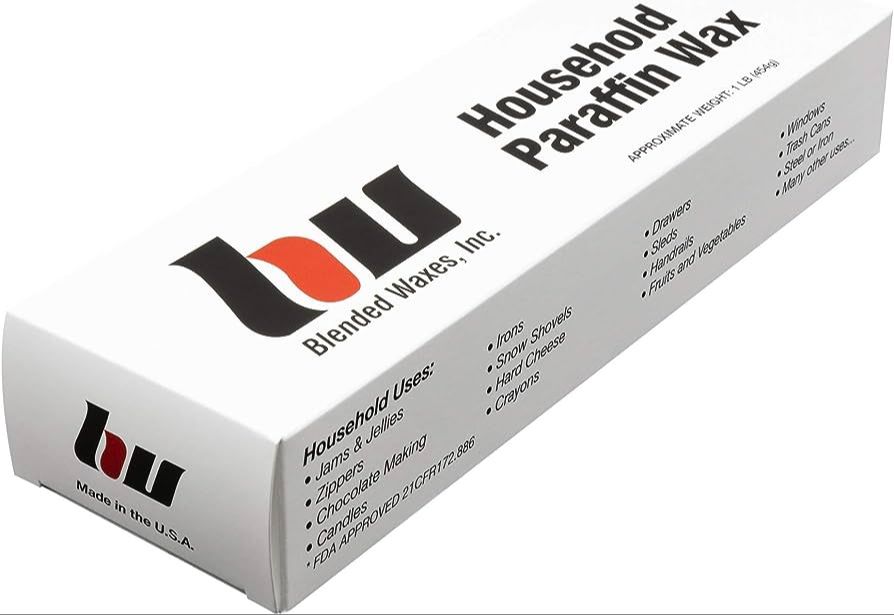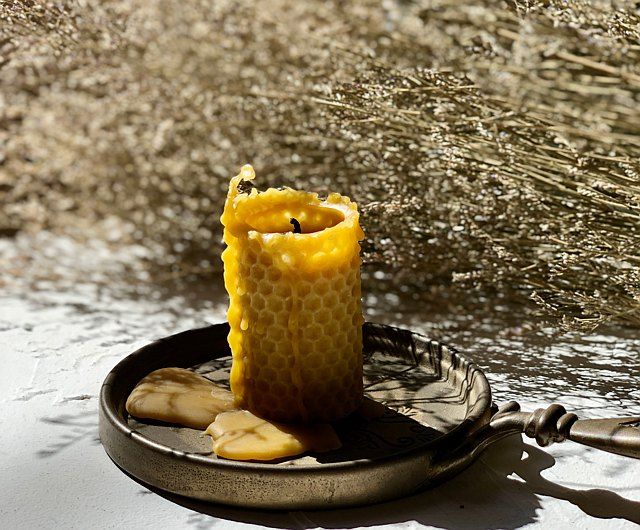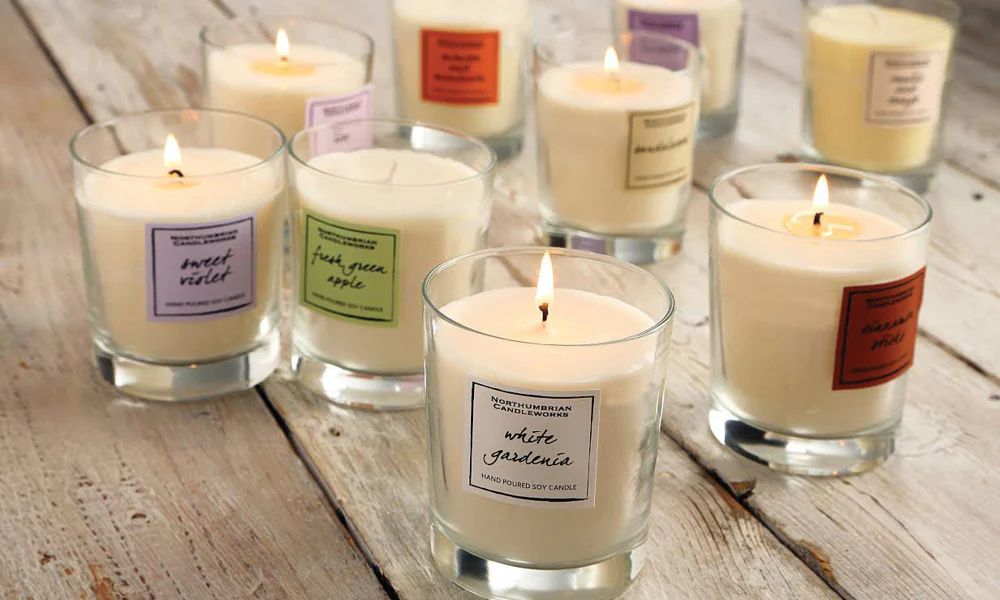A Guide To Types Of Candle Wax
Candle making has been around for centuries, with various types of waxes used to create candles. The most common candle waxes include paraffin, soy, beeswax, palm, coconut, bayberry, and synthetic wax blends. Each type of wax has its own unique properties that affect the burn quality, scent throw, appearance, and cost of the finished candle.
Paraffin wax is a petroleum byproduct that is odorless, colorless, and inexpensive. It creates a candle with excellent burn quality and scent throw. Soy wax comes from soybeans and burns cleanly while allowing subtle fragrances to come through. Beeswax has a lovely honey aroma and burns slowly with a natural glow. Palm wax comes from palm oil and creates hard, glossy candles. Gel wax contains polymers that make it transparent and excellent for embeds. Coconut wax comes from coconut oil and makes for nicely textured natural candles. Bayberry wax comes from bayberry plants and has a distinctive spicy, woody scent. Synthetic wax blends combine different waxes to achieve desired properties.
When selecting a candle wax, crafters must consider the desired look, scent, cost, hardness, melting point, and other factors. Testing different wax types is key to finding the best match for each candle-making project.
Paraffin Wax
Paraffin wax is one of the most common types of wax used for candle making. It is derived from petroleum and is a byproduct of oil refining (1). Some key facts about paraffin wax:

- Made from petroleum – Paraffin wax comes from crude oil that has been refined. The wax molecules are extracted during this process (2).
- Most popular candle wax – Due to its low cost and availability, paraffin is the predominant wax used for candle making. It is estimated that over 90% of candles are made with paraffin wax.
- Hard, long-burning – Paraffin wax is hard and provides a long burn time. This makes it ideal for pillar candles and votives.
- Versatile – In addition to candles, paraffin wax has many other uses including sealing food, waxing skis, and manufacturing cosmetics.
- Allergies – Some individuals may be sensitive to the petroleum-based compounds in paraffin wax. Beeswax is a common alternative for those with allergies.
While versatile and affordable, some avoid paraffin due to its petroleum origins. However, it remains the wax of choice for many candle makers and enthusiasts.
Beeswax
Beeswax is a natural wax made by honey bees. Bees produce beeswax in their wax glands and use it to build the honeycomb cells where they store honey and pollen. According to the Encyclopedia MDPI, beeswax is composed of at least 284 different compounds, with esters, hydrocarbons, acids, and other components making up the bulk of its chemical structure (Encyclopedia MDPI).

Unlike synthetic waxes, beeswax is completely natural, sustainable, and renewable. It has a lovely honey-like scent and a natural golden yellow color. Beeswax candles burn brighter and cleaner than paraffin wax candles. The natural wax helps beeswax hold its shape and burn longer than other candle waxes. Beeswax is also harder and more brittle than other waxes (ScienceDirect).
Soy Wax
Soy wax is made from hydrogenated soybean oil. It is a natural, clean-burning wax that is biodegradable and renewable since it comes from soybeans.
One of the benefits of soy wax is that it has a lower melting point compared to other waxes. The melting point of soy wax ranges from 130-185°F depending on the level of hydrogenation. This makes soy wax ideal for container candles since it melts at a low temperature to create a nice pool of liquid wax.

Soy wax also holds scent very well. The natural properties allow fragrance oils to bind nicely with the wax so candles have excellent hot and cold scent throw. Soy wax has a smooth and creamy appearance which gives candles a nice finish.
Since soy wax comes from a renewable resource, it is considered a sustainable green alternative to paraffin wax. The crops used to produce soy wax absorb carbon dioxide as they grow, helping to reduce greenhouse gases. Soy wax is also biodegradable.
Some drawbacks to soy wax are that it’s prone to frosting and can get brittle in cold temperatures. Proper wicked candles are necessary to avoid issues. But overall, soy is an excellent natural wax for candles.
Citation: https://blendedwaxes.com/blog/wax-melting-point-factors/
Palm Wax
Palm wax is a natural vegetable wax derived from the fruit of palm trees. It is made from palm oil, which comes from the creamy flesh inside of palm fruits. Palm oil is extracted from the fruit and then refined to produce palm wax (source: https://craftiviti.com/products/creamy-palm-wax).
Compared to other natural waxes like soy wax and beeswax, palm wax is harder and has a higher melting point. It melts between 60-65°C and has a smoke point between 230-254°C (source: http://www.hciwax.com/index.php/products/natural-wax.html). This high melting point makes palm wax excellent for pillar candles and votives.
Palm wax contains no paraffin, is biodegradable, and burns cleaner than petroleum-based waxes. It’s odorless and blends well with essential oils and fragrance oils. Palm wax candles have good scent throw and burn slowly with a bright flame.
Gel Wax
Gel wax is a mixture of paraffin wax and polymer additives that alter its structure. This allows gel wax to be transparent and hard like glass or crystal [1]. The polymers give gel wax more rigidity than plain paraffin. Gel wax cools into a smooth, solid finish rather than crystallizing like plain paraffin. This transparent, glass-like finish makes gel wax ideal for see-through pillar candles and containers.

Since gel wax retains a crystal clarity when cool, it can showcase colors, fragrance, and decorative objects embedded within candles. The smooth surface also allows for sharper imprints and designs. Gel wax burns slowly and provides a highly transparent melt pool as the candle burns down. The rigidity of gel wax allows candles to be blended with higher concentrations of fragrance and dye than plain paraffin or soy without compromising the appearance or burn performance.
While gel wax can hold shape well on its own, adding vybar or stearic acid gives gel candles enhanced rigidity and support. Gel wax performs best in containers and with medium to large diameter pillars. The mixture of paraffin and polymer gives gel wax an intermediate melting point between paraffin and soy or beeswax. Properly formulated gel wax has excellent scent throw and can hold heavy fragrance loads without sweating or discoloration.
Coconut Wax
Coconut wax is a natural wax made from coconut oil. It has become increasingly popular in recent years as a candle wax due to its natural origins and excellent performance. Coconut wax contains a high percentage of fatty acids that provide a smooth, creamy texture and shiny appearance.
Some key benefits of coconut wax include:
- It has a lower melting point than paraffin, making it easy to work with.
- It holds fragrance oils very well, giving candles a stronger scent throw.
- Coconut wax burns slowly and evenly without clogging wicks.
- It’s non-toxic and biodegradable.
- Coconut wax produces minimal soot when burned, making it cleaner than paraffin.
Coconut wax is often blended with other natural waxes like soy, beeswax, and palm to modify its properties. It can also be used on its own. The natural source and performance make coconut wax an excellent choice for candles, particularly those with essential oil or natural fragrances where scent throw is important.
Source: https://www.sensualcandle.co/blogs/sensual-stories/coconut-wax-candles-benefits
Bayberry Wax
Bayberry wax is made from the green berries of the bayberry bush. The berries contain a natural wax that can be extracted by boiling the berries in water. According to the History of Bayberry Candles, wild bayberry bushes grew all along the Atlantic coast and women discovered the waxy berries could be turned into candle wax in the 17th century.
Bayberry wax candles have a very strong, distinctive fragrance. The scent is often described as woodsy, musky, or spicy. According to Bayberry Candle History, bayberry candles were believed to bring good luck, wealth, and prosperity to the home. The unique scent and folklore origins make bayberry a beloved candle variety.
A downside of bayberry wax is that it is very hard to extract from the berries. It takes 15-30 pounds of berries to make just 1 pound of wax. This makes bayberry candles much more labor-intensive and expensive to produce than other types of wax.
Synthetic Wax Blends
Synthetic wax blends combine natural waxes like soy or beeswax with paraffin wax. Blended waxes aim to get the best properties of each wax. A popular synthetic blend is soy-paraffin wax. This combines soy wax, which is natural and clean-burning, with paraffin wax, which has excellent scent throw and is easy to burn. According to Martha Stewart (Martha Stewart) and Candle Science (Candle Science), soy-paraffin blends have a higher fragrance load than pure soy wax, increasing aroma. The natural soy component allows for a cleaner burn and smoother texture than pure paraffin. Soy-paraffin blends are beginner-friendly with good scent throw. They have characteristics of both component waxes, making them versatile and customizable.
Choosing the Right Candle Wax
There are several factors to consider when choosing the right type of candle wax for your needs:
Fragrance retention – Some waxes like paraffin and soy hold fragrance oils better than others. Beeswax and palm wax don’t retain scents as well. If having a strong scented candle is important, paraffin or soy wax are good choices (source).
Burn time – Paraffin burns the longest, followed by beeswax and soy wax. Palm and coconut waxes have shorter burn times. Consider the burn time you want when selecting wax (source).
Melting point – Waxes have different melting points, which affects how the candle burns and if wax pooling occurs. Paraffin has the highest melting point followed by beeswax and soy. Lower melting point waxes may not be suitable for hot climates.
Price – Paraffin is the most affordable option. Beeswax and soy wax are more expensive. Specialty waxes like bayberry and palm wax are the priciest.
Overall, assess your priority between fragrance, burn time, price, and burning temperature when choosing a candle wax. Testing different waxes can help determine the right fit for your specific needs and preferences.





